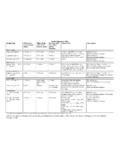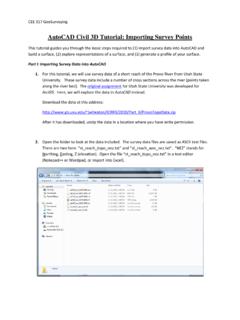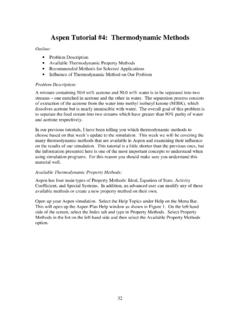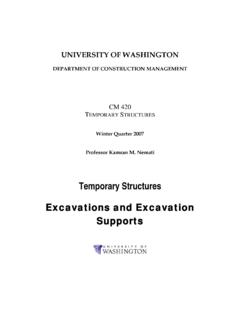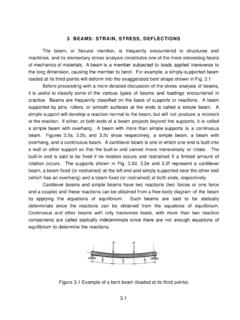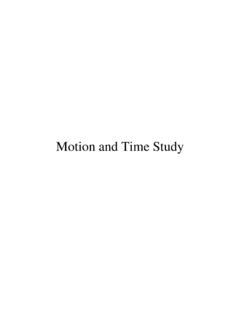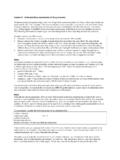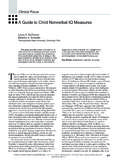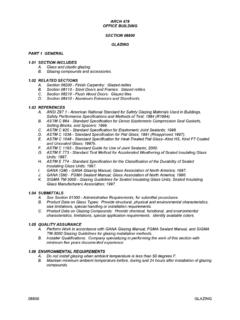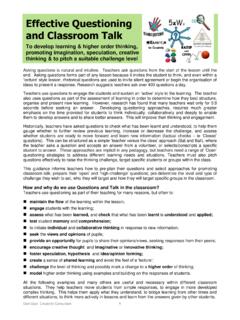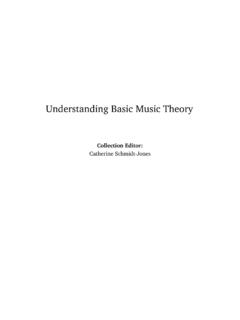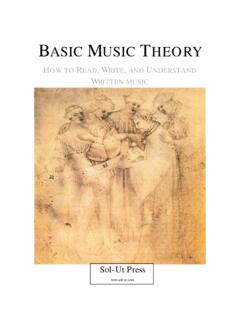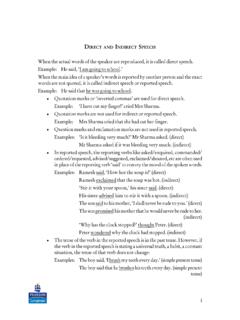Transcription of Chapter 12: Sound Localization and the Auditory Scene
1 Chapter 12: Sound Localization and the Auditory Scene What makes it possible to tell where a Sound is coming from in space? When we are listening to a number of musical instruments playing at the same time, how can we perceptually separate the sounds coming from the different instruments? Why does music Sound better in some concert halls than in others? Auditory Localization ; the Where pathway for the Auditory system Auditory space - surrounds an observer and exists wherever there is Sound Researchers study how sounds are localized in space by using Azimuth coordinates - position left to right Elevation coordinates - position up and down Distance coordinates - position from observerAuditory Localization On average.
2 People can localize sounds Directly in front of them most accurately To the sides and behind their heads least accuratelyLocation cues are not contained in the receptor cells like on the retina in vision; location for sounds must be calculated through other primary cues for Auditory Localization :1. Interaural time difference (ITD)2. Interaural level difference (ILD)3. Head-related transfer function (HRTF)Cues for Auditory Location Binaural cues - location cues based on the comparison of the signals received by the left and right earsCue 1.
3 Interaural timedifference (ITD)- difference between the times sounds reach the two ears When distance to each ear is the same, there are no differences in time When the source is to the side of the observer, the times will differ01234 Left01234 RightTime (msec)01234 Left01234 RightTime (msec)Interaural time difference (ITD)Speed of Sound at sea level: 761 mph = inches/millisecondIt should take about msec for Sound to travel the width of the average for different directions:Interaural time difference (ITD)The Cone of Confusion : Set of locations that have the same interauraltime differences (ITD) (s)Demonstration of interaural level difference (ILD):intensity sweep from left to right 2.
4 Interaural leveldifference ILD- difference in Sound pressure level reaching the two earsReduction in Sound level occurs for high frequency sounds for the far earThe head casts an acoustic shadowInteraural level difference (ILD) is best for high frequency sounds because low frequency sounds are not attenuated much by the head.(think of how low frequency sounds pass through the wall from your neighbor next door)Interaural level difference (ILD) is best for high frequency 3: the head-related transfer function (HRTF) The pinna and head affect the intensities of frequencies Measurements have been performed by placing small microphones inears and comparing the intensities of frequencies with those at the Sound source The difference is called the head-related transfer function (HRTF) This is a spectral cue since the information for location comes from the spectrum of frequencies 1)
5 Free-field presentation - sounds are presented by speakers located around the listener s head in a dark roomListener can indicate location by pointing or by giving azimuth and elevation coordinates2) Headphone presentation of soundsAdvantage - experimenter has precise control over soundsDisadvantage - cues from the pinna are eliminated, which results in the Sound being internalized Sound can be externalized by using HTRFs to create a virtual Auditory spaceTwo ways to present sounds to subjects: Experiments by Wight and Kistler Experiment 1 - used virtual Auditory space HRTFs, ITDs, & ILDs were used to indicate locations that varied from left to right Listeners were fairly accurateWhich cues for Sound Localization do we actually use?
6 Both ITD and ILD cues:Accurate judgment of azimuthLow frequency tone:ITD kept constant at 90 degrees:Subjects don t use ILD cue and ITD dominates judgmentFor low frequencies, ITD dominates judgmentFor high frequencies, ILD dominates judgmentJudging Elevation ILD and ITD are not effective for judgments on elevation since in many locations they may be zeroYou can turn elevation to azimuth by tilting your head. Experiment investigating spectral cues:They were then fitted with a mold that changed the shape of their pinnae.
7 Right after the molds were inserted, performance was poorListeners were measured for performance locating sounds differing in elevationOnce the molds were removed, performance stayed 19 days, performance was close to original performanceThis suggests that there might be two different sets of neurons one for each set of spectral cuesThe Physiological Representation of Auditory Space Interaural time-difference (ITD) detectors - neurons that respond to specific interaural time differences They are found in the Auditory cortex and at the first nucleus (superior olivary) in the system that receives input from both ears Topographic maps - neural structure that responds to locations in spaceTopographic Maps Barn owls have neurons in the mesencephalicus lateralus dorsalis (MLD)
8 That respond to locations in space Mammals have similar maps in the subcortical structures, such as the inferior colliculus These neurons have receptive fields for Sound locationThe Auditory Cortex Even though there are topographic maps in subcortical areas of mammals, there is no evidence of such maps in the cortex (to date). Instead, panoramic neuronshave been found that signal location by their patternof firingEvidence for multimodal neurons coding spatial position in the association cortex of the Auditory Scene .
9 The what pathway Auditory Scene - the array of all Sound sources in the environment Auditory Scene Analysis - process by which Sound sources in the Auditory Scene are separated into individual perceptions This does not happen at the cochlea since simultaneous sounds will be together in the pattern of vibration of the basilar membranePrinciples of Auditory Grouping1. Location- a single Sound source tends to come from one location and to move continuously Auditory stimuli tend to group together by similarity.
10 This includes:2. Proximity in time- sounds that occur in rapid succession usually come from the same source This principle was illustrated in Auditory streaming3. Good continuation- sounds that stay constant or change smoothly are usually from the same sourcePrinciples of Auditory Grouping4. Similarity of timbre and pitch- similar sounds are grouped together Sounds with similar frequencies Sound like they come from the same source, which is usually true in the environmentThe Wessel effect(similarity of timbre)Pure tonePure tone + one octave Experiment by Bregman and Campbell (similarity of pitch vs.)

